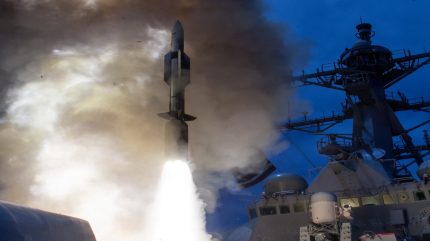
The Australian Government has entered into a A$7bn ($4.65bn) agreement with the US to upgrade its naval missile defence systems.
The deal includes the acquisition of long-range missiles, marking a step in enhancing the Australian Navy’s surface combatant fleet missile capabilities.

Discover B2B Marketing That Performs
Combine business intelligence and editorial excellence to reach engaged professionals across 36 leading media platforms.
This will be in line with the National Defence Strategy and the Independent Analysis into Navy’s Surface Combatant Fleet.
The missiles comprise the Standard Missile 2 Block IIIC (SM-2 IIIC) and Standard Missile‑6 (SM-6).
These will be deployed across the Navy’s Hobart class destroyers and, eventually, the Hunter class frigates.
This acquisition follows the successful test firing of an SM-6 missile from HMAS Sydney.

US Tariffs are shifting - will you react or anticipate?
Don’t let policy changes catch you off guard. Stay proactive with real-time data and expert analysis.
By GlobalDataThe SM-2 IIIC is an upgrade over its predecessors, featuring active seeker technology and improved defensive capabilities against missile threats.
This upgrade includes a transition from a semi-active seeker to the more advanced technology used in the SM-6 missile.
Additionally, the missile has been designed with a new dorsal fin and a thrust vectoring jet tab assembly, which helps control its trajectory post-launch.
The SM-6 missile is anticipated to extend the Navy’s air defence reach, capable of engaging a variety of threats including supersonic anti-ship cruise missiles and enemy surface ships.
It also introduces a terminal ballistic missile defence capability to Australia’s arsenal for the first time.
The technology behind the SM-6’s seeker and terminal guidance systems stems from the Advanced Medium-Range Air-to-Air Missile programme.
Together with the existing ESSM Block 2 and Naval Strike Missile, the SM-2 IIIC and SM-6 are expected to form a layered strike and missile defence system for the Navy’s surface combatant fleet.
In 2023, Raytheon received a $15.9m contract from the Naval Sea Systems Command in Washington DC.
This contract was an exercise of an option to fund the low-rate initial production of the Standard Missile-2 Block IIIC.



